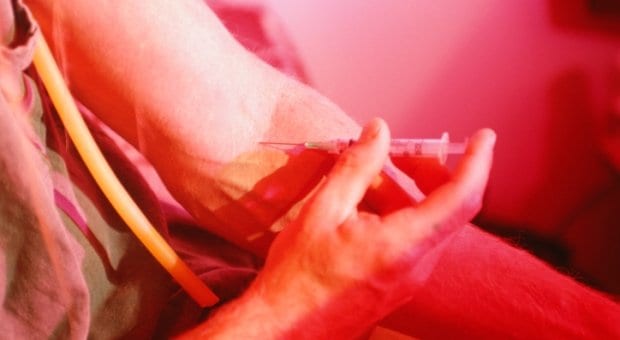Status quo or vague statements about improving access to drug treatment isn’t an option for the head of infectious diseases at the Ottawa Hospital.
Mark Tyndall is working with Sandy Hill Community Health Centre, the Drug User Advocacy League and other community partners to apply to Health Canada so Ottawa can open the country’s second supervised injection site.
“The status quo is not good enough,” Tyndall says. “I believe that Health Canada will eventually be forced to allow this to open. My hope is in five years there’ll be a bunch of these in Canada because it’s just so obvious that it’s such a pragmatic approach to a problem that we don’t know how to deal with very well.”
While Tyndall and other harm-reduction advocates say supervised injection sites are a sensible and compassionate way to reduce overdoses and the spread of HIV and hepatitis C while connecting marginalized intravenous drug users to community resources, Mayor Jim Watson and Ottawa Police Chief Charles Bordeleau have consistently said they don’t support a supervised site coming to Ottawa.
“The police would be the first to admit drug use is a problem in Ottawa, that they feel that they’re spending a lot of time on mental illness and low-level drug use that takes a lot of their time and resources,” Tyndall says. “It’s frustrating that we’re trying for the same goal, but somehow they have in their minds that a supervised site would not be a reasonable intervention to try.”
In a Sept 25 editorial published in the Ottawa Sun, Matt Skof, president of the Ottawa Police Association, reiterated the common belief that a supervised injection site would increase crime, which Tyndall says isn’t true, adding there are about 90 supervised injection sites worldwide and crime hasn’t increased as a result.
“This is not a site where people get drugs so they still have to obtain drugs and many of them do that through crime, so there’s no refuting that,” he says. “But the hope is we can allow people to use their drugs safer and that they’ll reduce their drug use. We’ve shown clearly through Insite that people who use [the site] regularly use less [drugs] and that a large proportion of them go into some kind of treatment.”
On Sept 30, marking the second anniversary of the Supreme Court decision supporting Insite, community partners will hold a mock supervised-injection site at 216 Murray St to demystify what an injection site would look like in Ottawa.
Opponents of the proposed supervised injection site often say that increasing access to treatment facilities is a better option, an argument that frustrates Tyndall, who’s never said it’s an either/or proposition.
“The access to treatment is abysmal, so if we say there’s 4,000 to 6,000 users in the city, there’s absolutely no capacity to handle even a small fraction of those people,” he says. “I’m all supportive of putting more money into treatment, but in the meantime, we need to do something now and to get people into treatment. You need to connect with them and get them there.”


 Why you can trust Xtra
Why you can trust Xtra


